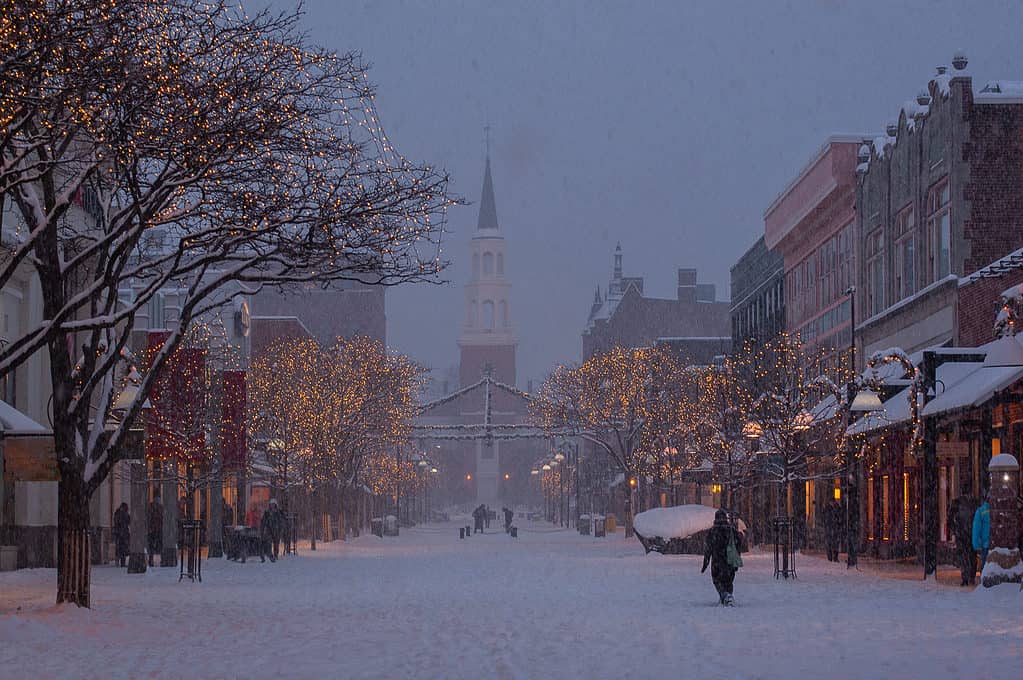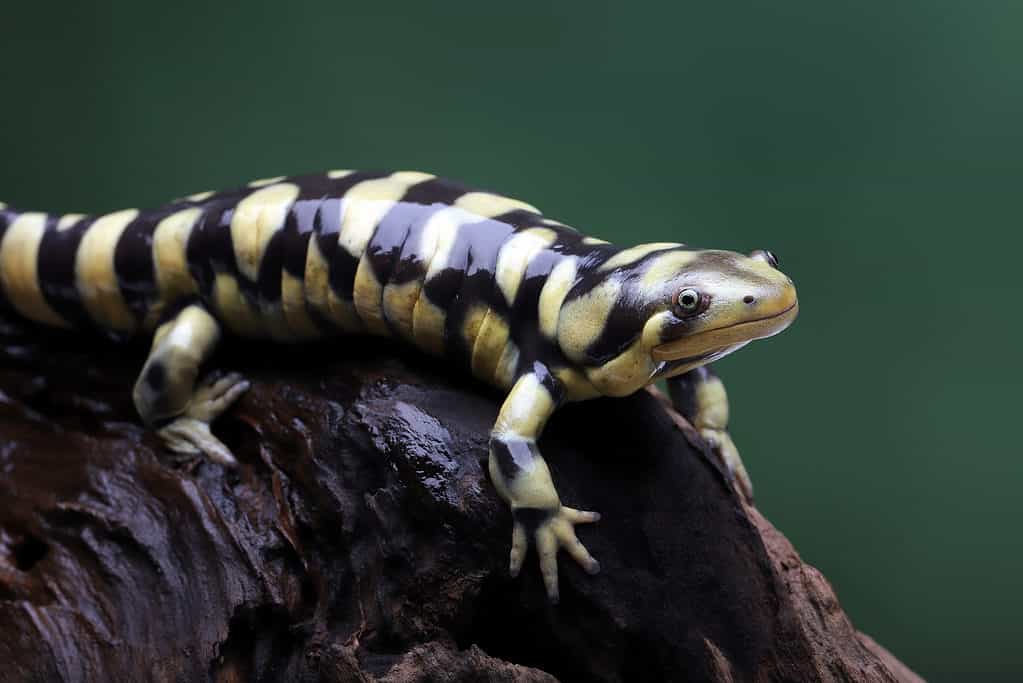You can’t mention Vermont without swooning over their mouth-watering maple syrup, Ben & Jerry’s ice cream, and apple pie. But Vermont is more than just delicious, sweet treats. During the winter season, both tourists and locals flock to mountainous areas like the Killington Ski Resort to enjoy winter sports. Those who prefer less adventurous winter activities may take a simple walk through wooded areas filled with wildlife. There is plenty to explore in Vermont when the winters get icy. But do you know how this winter compares to the coldest winter ever recorded in Vermont’s history?
The Coldest Winter Ever Recorded in Vermont’s History

©iStock.com/Alex Boudreaux
In 1835, bone-chilling temperatures spread throughout the state with -40 °F recorded in Montpelier and -38 °F recorded in Bradford. However, nearly 100 years later, Vermont set a new state record. The coldest winter in Vermont to date occurred in 1933 through 1934. Temperatures plunged to a way-beyond freezing -50 °F in Bloomfield. As a result of this harsh winter, Vermont lost over 20% of its apple trees. Luckily, the ever-resilient Macintosh variety managed to survive with only 2% of them affected.
Record-setting Bloomfield is a tiny town in Vermont located at the south point of the Silvio O. Conte Fish and Wildlife Refuge. Its elevation is 1,804 feet and in 2020, only 217 people resided there. It covers 40.5 square miles and sees its warmest weather during the summer months, when temperatures range between 70 °F and 80 °F on average. When December rolls around, Bloomfield gets nearly 20 inches of snow. Overall, residents of this town see snowfall about half of the year. In January and February, the lows dip down to single digits, sometimes dropping into subzero temperatures.
Average Highs and Lows This Year
The average highs and lows vary depending on the different regions of the state. Usually, January and February are the coldest winter months. June through August are the warmest months, with temperatures rising to the upper 70s. When September arrives, temperatures begin dropping into the 60s, with lows in the 40s. October drops further, with highs in the 50s and lows in the 30s.
November follows suit with highs in the 40s and lows in the 20s. By the end of the year, residents are bundled up, bracing themselves as they endure lows in the teens. By the end of February, Vermonters are looking forward to bearable temperatures. March brings partial relief with highs in the low 40s and lows in the low 20s. By April and May, Vermonters can see the light at the end of the cold-weather tunnel.
Montpelier, the capital of Vermont, experienced subzero temperatures this winter on February 4th when temperatures plummeted to -15 °F. That was the only significant drop in temperature this winter. It was short-lived, as temperatures returned to more tolerable double digits between 10 °F and 40 °F. There was another subzero dip at the tail end of February when temperatures dropped to -6 °F. However, they returned to usual averages for the remainder of the month into March.
Animal Migration in Vermont

©Lauren Suryanata/Shutterstock.com
Every spring, amphibians migrate to find breeding pools in Vermont but since these migrations happen across highways and roads, many of them don’t make it to their intended destinations. During rainy nights, it’s important for drivers to keep an eye out for salamanders and frogs, especially slowing down on roads near wetlands. The Vermont Fish & Wildlife Department relies on reports from residents to identify hotspots and protect these amphibians as they take their spring journeys to reproduce.
The state encourages Vermonters to give wildlife a helping hand whenever it’s appropriate to do so. Some animals stay throughout the winter, though survival may prove difficult. The animals that commit to Vermont during the winter include moose, deer, and otters. They stay active, with white-tailed deer usually traveling in the northern part of the state. If temperatures become too harsh, they seek refuge in thick forests, so they have some protection against the cruel winds and intense snow. Moose are a bit tougher, able to withstand even the coldest of temperatures. Additionally, they have well-adapted legs to travel through deep snow.
Other animals get out of dodge. For example, warblers head south in August, but duck and geese wait it out a little longer and depart in December. Loons take a different direction altogether and head east over to the New England coast. Although salamanders and frogs migrate in the spring, they choose a different tactic in the winter and instead hibernate on the forest floor, tucked underneath logs and leaves. Bears also conserve energy during this season when food sources become scarce. Even some human Vermonters migrate when temperatures start to drop, getting out of town during the winter months to enjoy warmer weather in southern regions.
The post How Does This Winter Compare to Vermont’s Coldest Ever? appeared first on AZ Animals.
from Animal News, Facts, Rankings, and More! - AZ Animals https://ift.tt/8C3Uf17